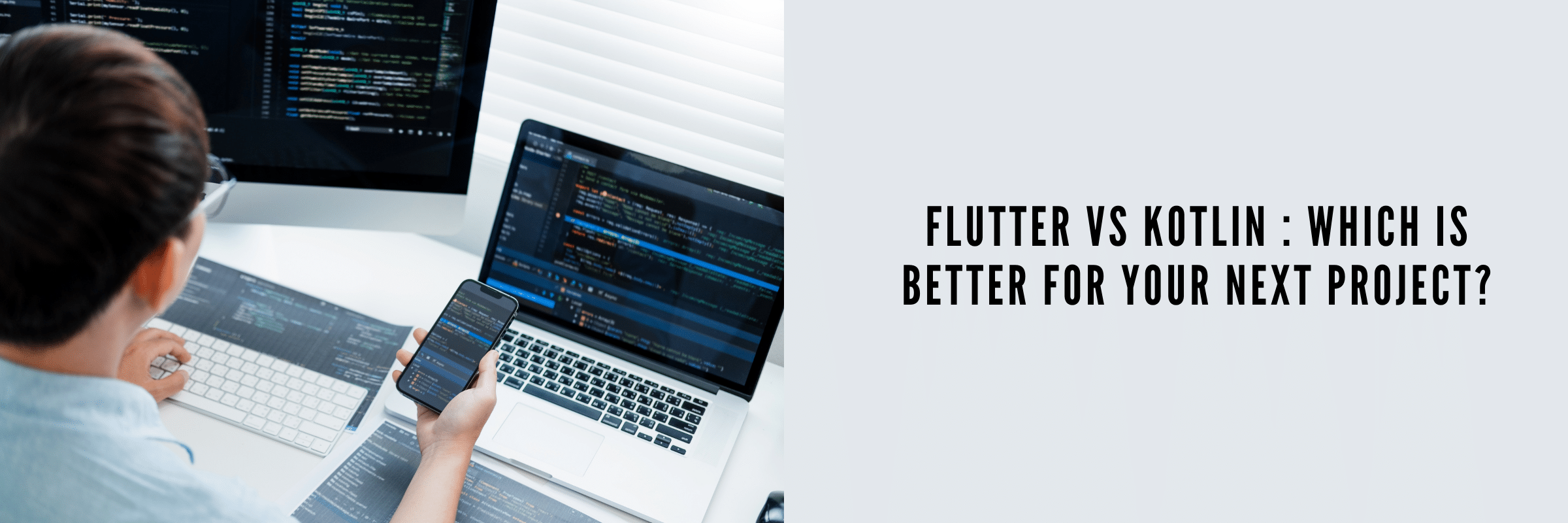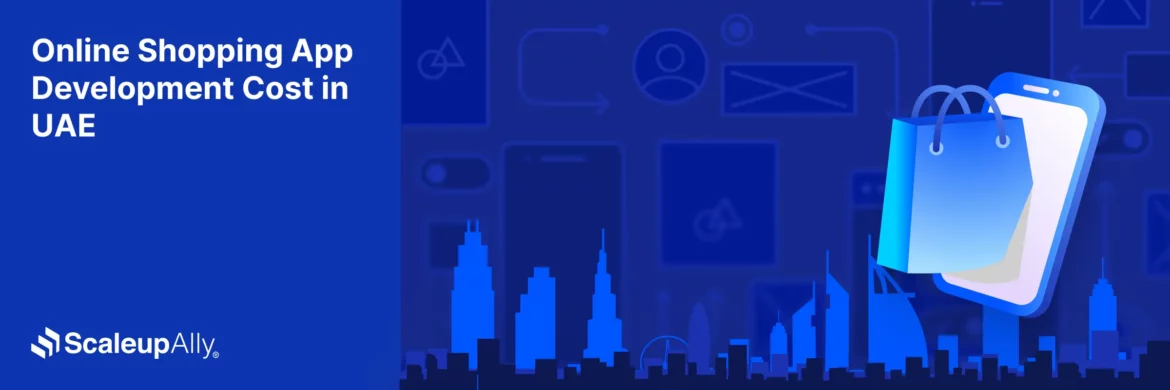
Flutter vs Kotlin: Which is Better For Your Next Project?
Suprabhat Sen | November 29, 2023 , 8 min read
Table Of Content
As the demand for mobile applications continues to soar, businesses are turning to cross-platform app development frameworks to reach a wider audience and reduce development time and costs. Two prominent players in this arena are Flutter and Kotlin. In this article, we will conduct a comprehensive comparison between Flutter and Kotlin to help you make an informed decision for your next app development project.
What is Flutter?
Flutter has become increasingly popular among developers because of its ability to create high-performing, visually attractive apps with a native-like feel. Moreover, its use of the Dart programming language and ahead-of-time compilation allows for fast and efficient app development.
One of the major benefits of using Flutter is its ability to share a single codebase across multiple platforms, including Android, iOS, Mac, Windows, and Linux. Therefore, it is a cost-effective solution for developing apps for multiple platforms.
Above all, Flutter’s widget library, which is built on the concept of reactive programming, allows for the creation of highly responsive and customizable UI. It also has an active and supportive community, which contributes to its growing popularity.
What is Kotlin?
Kotlin is a general-purpose programming language developed by JetBrains in 2016. It allows developers to share code, data, and business logic across multiple platforms, such as iOS, Android, and the web. This makes it a versatile language that can be used in various environments. It is also known as Kotlin Multiplatform because of its ability to work on different platforms.
Many developers prefer Kotlin over other programming languages because of its simplicity and ease of use. It is designed to reduce the risk of programming errors and crashes, making it a reliable choice for developers. Additionally, it is an SDK(Software Development Kit) rather than a framework, which means that it can be gradually integrated into existing applications.
According to recent statistics, there are around 105,000 apps that have been built using Kotlin. This demonstrates the growing popularity of the language among developers and entrepreneurs. Hence, it is considered the second most popular programming language after Java.
Flutter vs Kotlin: A Feature Comparison
| Factors | Flutter | Kotlin |
| Developed By | JetBrains | |
| Performance | Flutter has a faster debugging and development process because of the fact it has a hot reload and hot restart feature. This feature provides the developers with the opportunity to update the code instantly and see its effects at a faster rate, which helps speed up the complete development process much faster | The reason Kotlin applications run faster than the Flutter applications is that the Kotlin apps can directly interact with the device. Moreover, Kotlin code compiles in the same format as the platform, which makes it more suitable for cross-platform mobile app development and a robust platform |
| Ease of Learning | Flutter has a faster debugging and development process because of the fact it has a hot reload and hot restart feature. This feature provides the developers with the opportunity to update the code instantly and see its effects at a faster rate, which helps speed up the complete development process much faster | The reason Kotlin applications run faster than the Flutter applications is that the Kotlin apps can directly interact with the device. Moreover, Kotlin code compiles in the same format as the platform, which makes it more suitable for cross-platform mobile app development and a robust platform |
| UI/UX Experience | Flutter is a simple user interface framework that offers a collection of graphical primitives that are consistent and allow for the creation of extremely expressive user interfaces. It is a brand-new, cross-platform, open-source UI framework that makes programming quick and effective | The Kotlin user interface is likewise excellent. It may be used to create desktop, online, and native applications. In addition, you may build high-quality code in fewer lines because of its extensive functional programming features. It also works with other platforms like Android and iOS |
| Integration of Third-Party Libraries | Flutter is a user interface development tool due to which it requires third-party libraries and tools in order to make connections with the native environment | Kotlin language does not need a set of specific libraries and tools for making a connection as it works with the native platform ecosystem |
| Backend Capabilities | Flutter is renowned for having stunning UI. It is incredibly simple to use and has many widget modification choices. Although its interface is where it excels, it also has powerful backend features, albeit they can take a little more work to activate | Kotlin, on the other hand, allows a tonne of flexibility for developers to design and tweak their apps as needed because it is a general-purpose programming language. As a result, it’s an excellent option for creating complicated and large-scale applications that could be a little more challenging to accomplish using a framework like Flutter |
| Apps Developed | Some of the apps developed using Flutter are Cryptograph, Postmuse, Hamilton, Apptree, Google ads | Some of the apps developed using Kotlin are VMware, Coursera, Zomato, Netflix, Pinterest, Uber |
Choosing the Right Technology for Your Project: Flutter or Kotlin
Flutter and Kotlin are widely popular among mobile app developers because they are open-source and free to use. Both frameworks have their own features and functionalities that make them suitable for different types of mobile app development projects.
Flutter is known for its ability to build cross-platform solutions, making it a popular choice among developers who want to create apps that can run on multiple platforms with minimal changes. It also has a fast development cycle, customizable widgets, and a reactive programming model, which makes it an excellent choice for building high-performance apps.
On the other hand, Kotlin has its own set of strengths that make it an excellent choice for mobile app development. It is considered to be more expressive and concise than Java, which makes it a more efficient language for developing mobile apps. Additionally, it has a large and growing developer community, which makes it easier to find resources and support.
In summary, both Flutter and Kotlin are powerful frameworks for mobile app development and both have their own set of features and functionalities that make them suitable for different types of projects. However, developers have to decide which framework they want to use based on the specific requirements of their projects.
Conclusion
In conclusion, both Flutter and Kotlin have their strengths and are well-suited for cross-platform app development. Flutter provides a comprehensive UI development toolkit with its own rendering engine, enabling the creation of visually stunning and highly performant apps. Kotlin, on the other hand, offers a versatile programming language that is compatible with Java and provides powerful backend capabilities.
When choosing between Flutter and Kotlin, consider your specific project requirements, development team’s expertise, and the desired user experience. Flutter may be more suitable for projects that prioritise visually appealing UIs and require fast development cycles. Kotlin, on the other hand, is a solid choice for projects that require compatibility with existing Java codebases and extensive backend capabilities.
Ultimately, both Flutter and Kotlin offer powerful tools and resources for cross-platform app development, allowing businesses to reach a wider audience and deliver high-quality applications efficiently.
Looking to create scalable, user-friendly mobile solutions? ScaleupAlly offers Flutter app development services crafted to fit your unique business requirements.
Frequently Asked Questions
Q: Can existing native code be integrated with Flutter?
Yes, Flutter supports platform channels, enabling communication between Flutter code and native code written in languages like Java (Android) or Swift/Objective-C (iOS).
Q: Why should I choose Flutter?
Flutter provides a fast development cycle, expressive and flexible UI, and a single codebase for multiple platforms, which can save time and resources.
Q: Can I use Kotlin and Flutter together?
Yes, it’s possible to use Kotlin for the native parts of your application (e.g., business logic) and Flutter for the UI, thanks to Flutter’s support for platform channels.
Q: Can Kotlin be used for other platforms besides Android?
Yes, Kotlin is a versatile language that can be used for various applications, including server-side development, web development, and more.
Similar Comparison Articles Around Flutter
Related Blogs

Top 20 Emerging Technologies of 2026
Discover the top 20 emerging technologies of 2026. Explore which innovations are driving change across healthcare, finance, manufacturing, and other crucial industries.
ScaleupAlly Team
Dec 16 ,
9 min read

Online Shopping App Development Cost in UAE | Pricing & Factors Explained
Understand UAE online shopping app development costs in 2025 with pricing ranges, influencing factors, hidden fees, timeframes, and expert savings tips.
Suprabhat Sen
Nov 29 ,
13 min read

Software Development Timeline: Phases, Duration & Estimation Guide
Understand the software development timeline with phase durations, key factors, hidden delays, and practical methods to estimate project time.
Suprabhat Sen
Nov 29 ,
16 min read


